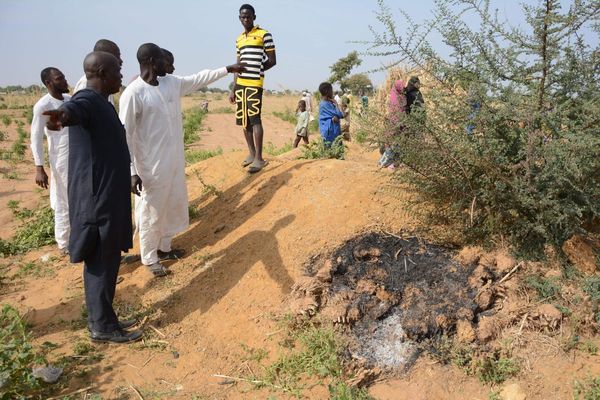
With Ukraine now in the early stages of a long-anticipated Ukrainian counteroffensive against Russia, Philippe Gros, a senior research fellow at French security and defence think tank Foundation for Strategic Research, talks to FRANCE 24 about Kyiv’s likely military strategies.
The much-awaited Ukrainian counteroffensive is finally underway, with Kyiv claiming to have captured settlements on the south-eastern frontline.
Journalists who reached the village of Neskuchne in the Donetsk region on Tuesday recorded images of heavy fighting in the recently liberated settlement.
On the other side of the trenches, however, the Russian army claims to be repelling the Ukrainian attacks with great success. At a televised meeting with Russian military bloggers on Tuesday, President Vladimir Putin claimed Ukraine has suffered 10 times the casualties as Russia.
In an interview with FRANCE 24, Philippe Gros, a senior research fellow at French security and defence think tank Foundation for Strategic Research (FRS), confirmed a weekend map drawn up by the Institute for the Study of War (ISW), showing that Ukraine had conducted counteroffensive operations in at least four areas, and explained the most likely Ukrainian military strategies:
FRANCE 24: What does the Ukrainian counteroffensive currently consist of?
Philippe Gros: We have to be extremely cautious here, because we only have limited information, and so there is no definite answer to this question at the moment. Having said that, Ukraine seems to be testing Russian defence lines in areas where the main axes of penetration are most likely to be.
There are three major axes at the moment: the one close to Dnipro, south of Zaporizhzhia, in the area south of Mala Tokmachka – without a doubt in a bid to advance towards Melitopol. And then there’s the Velyka Novosilka axis, where most Ukrainian units might have been deployed, and where they have the biggest gains. This would be the preferred axis for an advance towards Mariupol.
This is the very beginning of the counteroffensive, and just the first phase of the air-land manoeuvre (the first phase of the counteroffensive, for which war theatre preparations started weeks ago). We still haven’t seen the bulk of the new Ukrainian units in action. In the Velyka Novosilka region, re-equipped and reinforced Ukrainian units are being deployed, but not new brigades. A large part of the Ukrainian offensive hasn’t been put in action yet.
In addition, the Ukrainians might not yet have reached the main Russian line of defence. Logically, they should use their first units to try to make inroads into Russian defence lines, and then exploit the gap or gaps with mechanised reserve forces.
On the Russian side, the aim is to stop the Ukrainians from piercing through by moving their reserves [human and material] to the right place.
What is the current balance of power on the ground?
In the theatre of war, there’s more or less parity. The Russians are believed to have between 350,000 and 400,000 troops, and the Ukrainians probably have a little more. But Western artillery is far superior in quality compared to what the Russians have.
As I already said, much of the battle strategy for this counteroffensive has not been deployed yet. At best, just three out of the 12 new brigades are currently at the front.
Another important question to ask is: Which of the Russian units are still fit enough to repel the counteroffensive? Many, if not most of regular Russian troops have been severely tested by the winter offensive.
That being said, in Mala Tokmachka, the Ukrainians are up against the 58th Combined Arms Army, which holds the left flank of the front. It has the reputation of being one of Russia’s best forces and is probably one of the most well-preserved as well.
If the Russian-controlled southeastern zone is split into two, won’t the Ukrainians be caught between the north and the south?
This is the potential danger of any military manoeuvre that aims to go deep. Basically, the idea is to create an impossible dilemma for the enemy. To do that, you have to, on the one hand, deploy your forces elsewhere, and on the other hand, you need to have enough momentum to be able to create an imbalance in the enemy’s position, disorient its command and even make them panic, so that the enemy is unable to counter-attack on the flanks of your offensive axis.
The idea ultimately is to physically dislocate the enemy's position, to disintegrate its ‘system of force’, so that it can no longer react coherently and thereby be defeated. The Ukrainians have without a doubt forecast this scenario: some of their current axes of attack – including the advance on the flanks of Bakhmut – are undoubtedly aimed at creating these diversions and fixations. Several of Kyiv’s second units will also without a doubt shore up the flanks along the axis of progression that will emerge.
Why is there still so much uncertainty surrounding this counteroffensive?
It’s normal. The Ukrainians have maintained excellent operational security – ever since the start of the conflict, in fact. They release information in dribs and drabs. The general public is informed of the military results in due course. There is always more uncertainty about the Ukrainians than the Russians.
But one important question remains: Will the Ukrainians succeed in breaking the Russian defence line? Assuming Mariupol is a target, the operational goal is to reach the land corridor linking Crimea to the rest of Russia and break the backbone of Russia's presence in Ukraine in two.
This article has been translated from the original in French.







